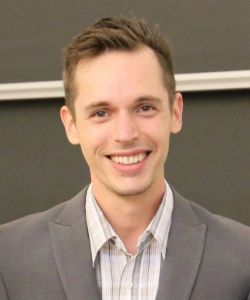
Luc Doyon (鲁可)
Education:
M.Sc. Anthropology, 2013 (U. Montréal, Canada)
PhD Anthropology, 2017 (U. Montréal, Canada)
PhD Prehistory, 2017 (U. Bordeaux, France)
Research Interests:
My research interests can be summarized into two overarching questions:
1) Where, when, and how prehistoric populations ceased to consider bone as a by-product of butchery and carcass processing activities and started to recognize its utility for technological purposes?
2) How can key osseous artefact types inform us on hominin dispersal events and prehistoric population dynamics?
I specialize in the study of osseous (antler, bone, and ivory) tools from Middle and Late Pleistocene contexts; this includes technological, morphometric, and use wear analysis on both archaeological specimens and experimental replicates. My research centres on two broad regions: East Asia and Western Eurasia.
In East Asia, I am part of a scientific collaboration between researchers from the IVPP and the CNRS UMR5199 – PACEA (Bordeaux, France), which aim to documenting late-Tardiglacial bone technology from the Ordos Plateau. I also conduct a post-doctoral research on some of the oldest bone tools known to date that were excavated at the Lingjing site in Henan. This latter research is part of a scientific investigation led by Prof. Li Zhanyang in collaboration with scholars from University of Bordeaux, Leiden University, and the Natural History Museum in London.
In Western Eurasia, I extend the research initiated during my master and PhD. I am mainly interested by the population dynamics at the beginning of the European Upper Palaeolithic. This is achieved through the study of Aurignacian projectile points.
From a methodological standpoint, I have a great interest in adapting quantitative methods to the study of archaeological remains. The quantitative tools developed in evolutionary biology (geometric morphometrics), mathematics (multivariate analysis, probabilities, clustering methods), ecology (diversity indexes, analysis of environmental/functional/stochastic processes), geography (geographic information systems, effective migration surface modelling), and information sciences (big data) are particularly inspiring to me.
PUBLICATIONS (*peer reviewed)
Articles
2018* d’Errico, F., Doyon, L., Zhang, S., Baumann, M., Lázničková-Galetová, M., Gao, X., Chen, F., Zhang, Y..“The origin and evolution of sewing technologies in Eurasia and North America”, Journal of Human Evolution (DOI: 10.1016/jhevol.2018.10.004)
2018* Zhang, S., Doyon, L., Zhang, Y., Gao, X., Chen, F., Guan, Y., d’Errico, F.. “Innovation in bone technology and artefact types in the Late Upper Palaeolithic of China: insights from Shuidonggou Locality 12”, Journal of Archaeological Science, 93, pp. 82-93 (DOI: 10.1016/j.jas.2018.03.003)
2018* Doyon, L., Li Z., Li, H., d’Errico, F.. “Discovery of circa 115,000-year-old bone retouchers at Lingjing, Henan, China”, PLOS ONE, 13(3), pp. e0194318 (DOI: 10.1371/journal.pone.0194318)
2018* d’Errico, F., Doyon, L., Colagé, I., Queffelec, A., Le Vraux, E., Giacobini, G., Vandermeersch, B., Maureille, B.. “From number sense to number symbols. An archaeological perspective”, Philosophical Transaction of the Royal Society B, pp. 1-10 (DOI: 10.1098/rstb.2016.0518)
2017* Doyon, L.. “La place de la grotte de l’Observatoire dans le paysage socio-technologique aurignacien de l’Europe méridionale / The Grotte de l’Observatoire and its place in the Aurignacian socio-technological landscape of Southern Europe”, Bulletin du Musée d’Anthropologie préhistorique de Monaco, 57, pp. 21-33
2017 Doyon, L.. « Résumé de thèse : La variabilité technologique et morphométrique des pointes de projectile aurignaciennes en matière osseuse : implications cognitives, sociales et environnementales. », Bulletin de la Société préhistorique française, 114(4), pp. 628-630
2014 Hardy, M., Pothier Bouchard, G., Doyon, L.. « Un outil à usages multiples en os dans un context moustérien », Bulletin de la Société préhistorique française, 111(4), pp. 741-744
2014* Doyon, L., Katz Knecht, H.. “The Effects of Use and Resharpening on Morphometric Variability of Aurignacian Antler Projectile Points”, Mitteilungen der Gesellschaft für Urgeschichte, 23, pp. 83-101
Professional Reports
2018 Doyon, L., “Alteration on faunal remains owing to current curation methods in China: Guidelines for the optimal recovery and storage of eco-cultural relics”, Technical Report - Institute of Cultural Heritage, Shandong University
2014 Doyon, L.. « L’archéologie expérimentale au service de la Grotte du Bison, Arcy-sur-Cure (Yonne, France) », in Hardy, M., David, F., Doyon, L., Girard, M., L’Homme, V., Pothier Bouchard, G., Arcy-sur-Cure (Yonne), Grotte du Bison, Rapport 2014, Service Régional d’Archéologie, Bourgogne, France
2014 Doyon, L.. « Analyse spatiale des vestiges archéologiques », in Hardy, M., David, F., Doyon, L., Girard, M., L’Homme, V., Pothier Bouchard, G., Arcy-sur-Cure (Yonne), Grotte du Bison, Rapport 2014, Service Régional d’Archéologie, Bourgogne, France
2014 Doyon, L.. Découverte fortuite d’une pointe de flèche Lamoka, Inventaire des sites archéologiques du Québec, Document 5544
2013 Doyon, L.. « Analyse spatiale des restes archéologiques », dans Hardy, M., David, F., Doyon, L., D’Iatchenko, V.I., Girard, M., L’Homme, V., Pothier Bouchard, G., Roblin-Jouve, A., Arcy-sur-Cure (Yonne), Grotte du Bison, Rapport 2013, Service Régional d’Archéologie, Bourgogne, France
2011 Doyon, L.. Analyse de l’industrie organique du site KcFs-2, Îles Nuvuk (Nunavut, Canada), Institut culturel AVATAQ, Montréal, Québec, Canada
Manuscripts accepted for publication
n.d.* Li, Z., Doyon, L., Li, H., Wang, Q., Zhang, Z., Zhao, Q., d’Errico, F.. “Engravings on bone from the archaic hominin site of Lingjing (Xuchang, Henan, China)”, Antiquity
n.d.* Doyon, L.. “On the shape of things: A geometric morphometrics approach to investigate Aurignacian group membership”, Journal of Archaeological Science
Manuscripts under review
n.d.* Doyon, L.. “The Cultural Trajectories of Aurignacian Osseous Projectile Points in Southern Europe: Insights from Geometric Morphometrics”, Quaternary International
n.d.* Doyon, L., Li, Z., Li, H., Wang, H., Zhao, Q.. “Further evidence for organic soft hammer percussion and pressure retouch from Lingjing (Xuchang, Henan, China)”, Lithic Technology
n.d.* Doyon, L.. “Bone needles in China: A proxy for hominin dispersals during the Late Pleistocene?”, Acta Anthropologica Sinica (人类学学报)

